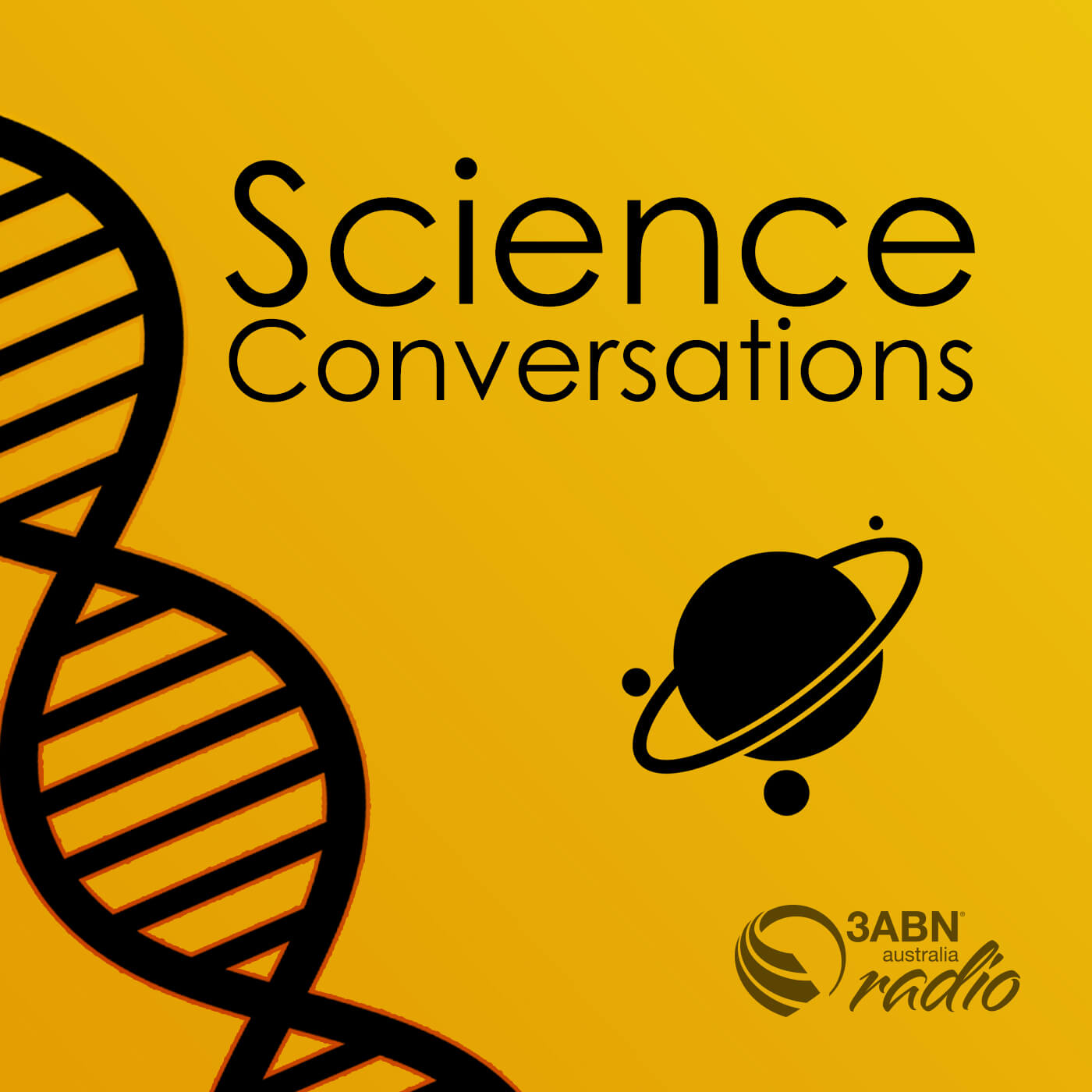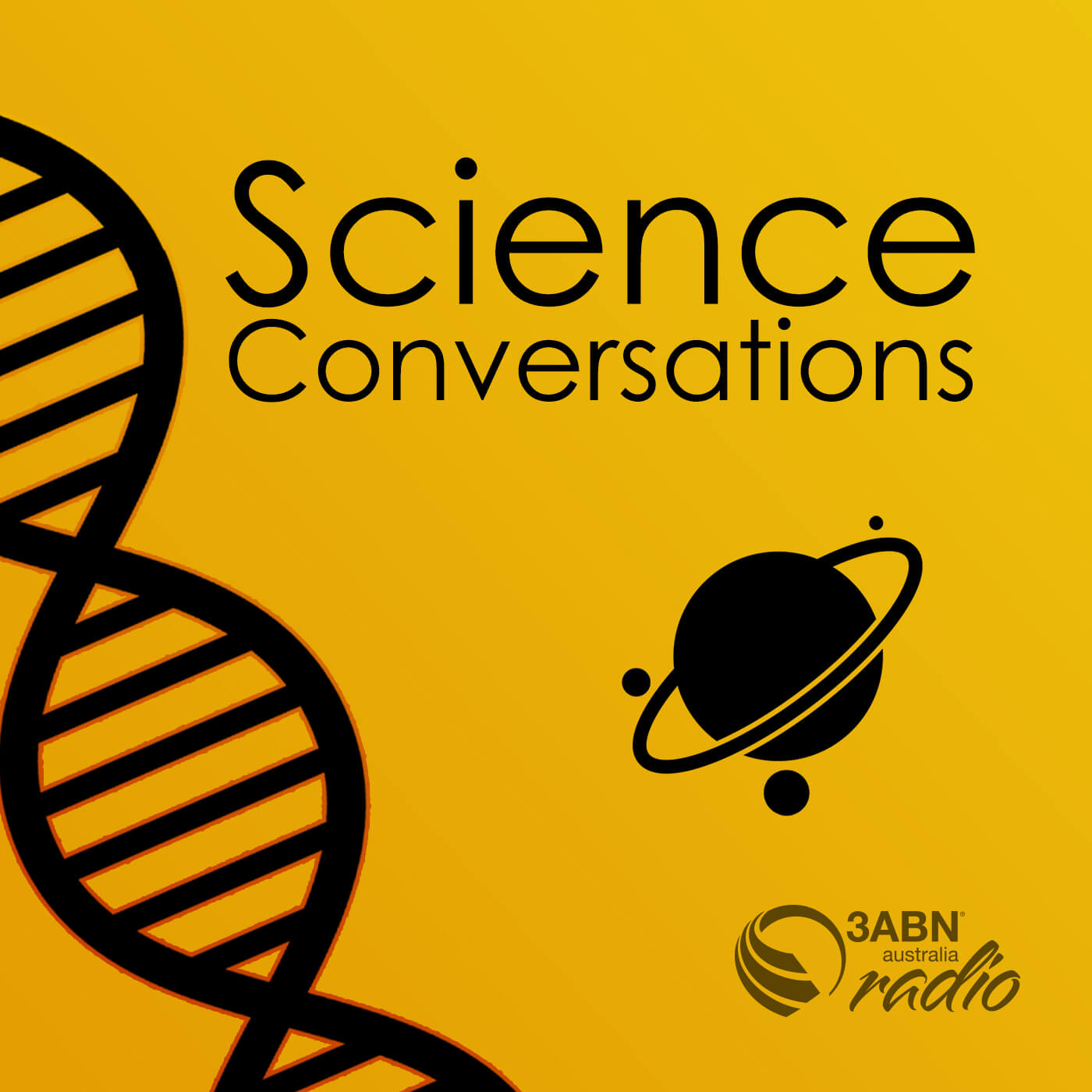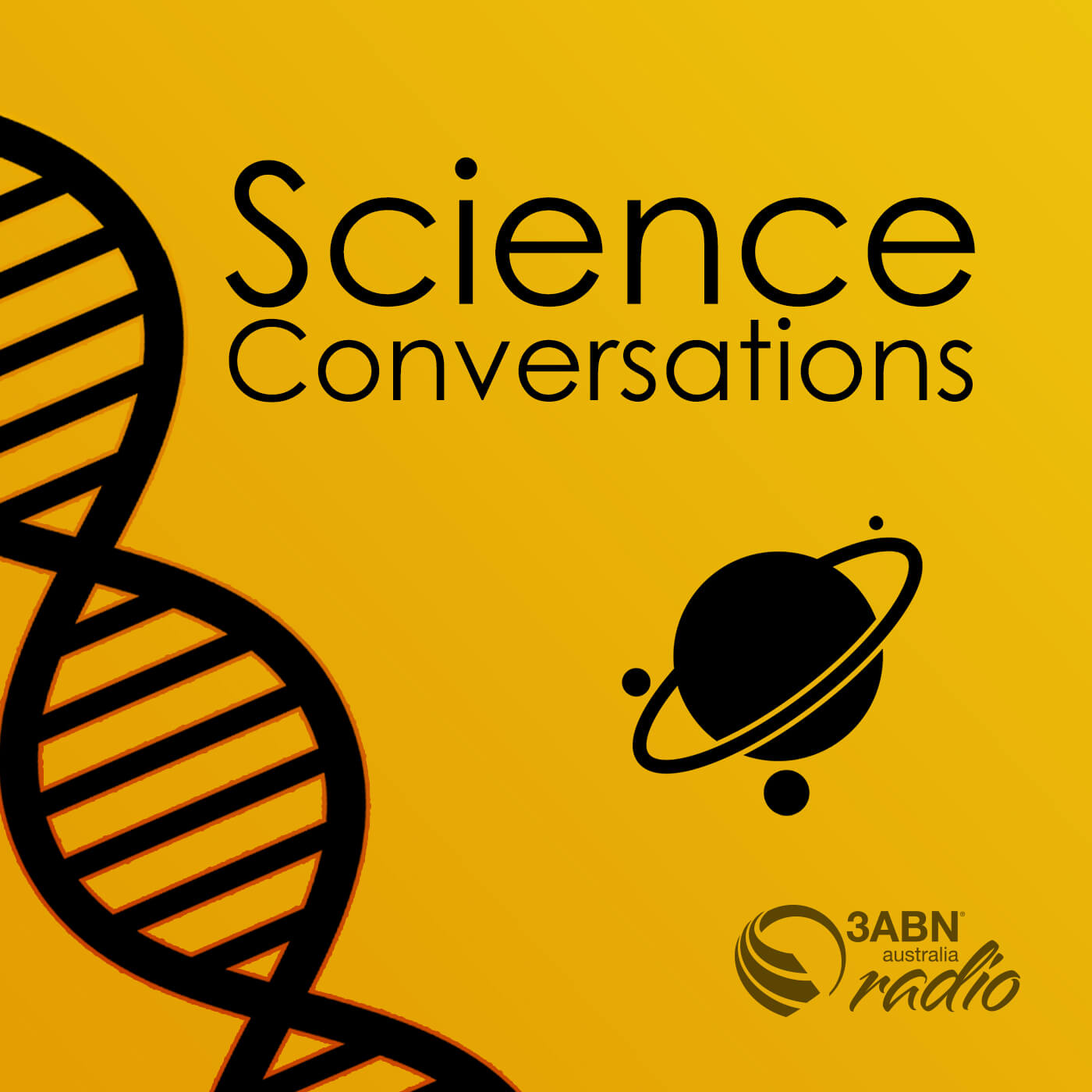Episode Transcript
SPEAKER 1
Welcome to Science Conversations. I'm Kaysie Vokurka. Is there a problem with radiometric dating? Join me to discuss part three of this topic is Dr. John Ashton. Welcome once again.
SPEAKER 2
Hello, Kaysie.
SPEAKER 1
Dr. John Ashton has written a book entitled Evolution Impossible 12 Reasons why Evolution Cannot Explain the Origin of Life on Earth. And in the last couple of sessions and this one, we've been looking at some of the work in chapter nine. So we've talked obviously about sedimentation rates, continental erosion and the like, volcanic material that accumulates on the surface of the Earth. But there's also some biological clues which we've talked about in previous sessions, but maybe we can mention them briefly here that suggest that life on Earth must be much younger than what we are getting as ages. Age values from the radiometric dating of, like, fossilised rock material tell us a bit more about that.
SPEAKER 2
Yeah, sure. So, again, the issue is that we look at radiometric dating as the gold standard, yes. For measuring ages and this sort of thing. And what we've been discussing is that there is powerful evidence that says that these radiometric dating methods are greatly exaggerating the ages by orders of magnitude. And this is a very, very serious problem. And more evidence comes from a number of other different areas. For example, the discovery of soft tissue in dinosaur remains. So you've got dinosaurs, for example, believed to have become extinct, according to conventional dating, 70 million years ago. And so how can soft tissue survive? And soft tissue has now been reported in dinosaurs found all around the world in a number of sites. Now, a number of research groups have identified soft tissue remaining. Now, when we're talking about soft tissue, there's things like, you know, collagen, muscle fiber, even DNA fragments, these sort of things. And these are very long polymer molecules which are relatively unstable. They break down. So just like plastic, we have plastics that are polymers and after a while they break down. And even the ones with special chemicals in them to preserve them, they can extend the life. But again, these long chain molecules, particularly biomolecules that don't have these other chemicals in them to preserve them are going to break down. So it seems very unrealistic that these long chain molecules would have survived tens of millions of years. And this is on the basis of data that we do when we can study the rates at which these molecules break down. So this is another area of conflict of data. Other thing is too, they've found, for example, certain bacteria, viable bacteria have been isolated from salt crystals in the permian date, again, 250 million years old. So again, because Bacteria have again, all their structures involve these polymeric structures making up all the different compounds and molecular machinery and this sort of thing, it would have broken down because these particular compounds are just, they're very, very long chain molecules that vibrate and so forth and they deteriorate, the bonds tend to break down. So again, the fact that they have this bacteria spores again suggests maybe thousands of years, but not the hundreds of millions of years. So that's the other evidence, but I think really exciting material has come from the rate at which we're now measuring the accumulation of mutations in living DNA. This is a very, very exciting area. And some years ago it was discovered that DNA have, human DNA, for example, has a very high mutation rate. Matter of fact, some of the recent data points out that human DNA accumulates at quite a large rate. Each generation accumulates more errors in its DNA. And there's a lot of data that's been done on this, published in the top journals in the world. And it's interesting that Dr. John Stanford from Cornell University, who was a geneticist involved in a lot of the early genetic engineering work that was done, observed mutation accumulates and that human DNA accumulates a huge 90,000 errors in just about 6,000 years. And so that is that if we took the biblical lifespan that is about 0.003% of our DNA was become in operative in less than 10,000 years. And so by 6 million years, 3% of our DNA, or 1 in every 33 pieces of code would be damaged. So it's inconceivable that we would, that humans would be able to function. In other words, we would have died out long before 6 million years.
SPEAKER 1
So yeah, okay, so this, this degradation really is putting a time limit on how long human beings could have existed because it's going down. Like the rate is, the mutations are accelerating more than what humans would be able to sustain life indefinitely, is that.
SPEAKER 2
Yeah, pretty much. That's right.
SPEAKER 1
Yeah.
SPEAKER 2
So what we're saying is that if we, you know, the sort of, the ancestors, the ape like creatures that humans evolved from and you know, pushing the date back 6 million years and people are trying to push back humanity further and further these days. If we look at mutation rates, then it's, it's impossible. We, we can't be that old. One in, you know, one in 33 pieces of code would have been damaged. And the other fascinating thing is too that the DNA is deteriorating. It's not evolving into improved DNA. So what we're actually observing is the very opposite to evolution. And of course, we've talked about this earlier, but this is another very important area. Now what the course, the, the DNA of, you know, mammals and birds and these sort of things is, is the, and the biochemistry associated with DNA, of course, is, is extremely complex. And so, for example, if we damage the code that is going to be responsible for beta cell production in the, in the pancreas, then we're going to die from diabetes. So what we're saying is that you don't have, you just have to damage critical pieces of the code for the species to have died out. So once you, once you damage that another. And also we, you know, again, if you damage a piece of code just for one section in the blood coping chain, then we're going to bleed to death, you know, very quickly.
SPEAKER 1
Just in one section.
SPEAKER 2
Yeah. So just one small area has to accumulate enough mutations to make that inoperable and we are going to die out. So if those mutations then are spread and developed, and that's what we know the rate of genetic diseases is accumulating in humans, when I last checked, which would probably be a few years ago now. But the John Hopkins Register. John Hopkins University Register of Genetic Illness in human genetic diseases, there's now over 10,000 different diseases that are caused by defects in the human genetic code. So we're actually accumulating these and these.
SPEAKER 1
Of course get passed on to the next one. So the next generation is going to be, you know, they have these defects already and so they're at a disadvantage for continuing species.
SPEAKER 2
Well, that's right. So we're all accumulating these mutations. Now again, originally, as God made it, the we get DNA part from Mum and part from dad. And the idea is that there, hopefully, if there's a bit of damaged DNA in Dad, then mom has the correct one and vice versa. But once we're accumulating mutations, once we get to a point that these mutations are so common that both parents have them, then that's when that mutation's definitely passed on and that's when it's accumulated. So what we're saying is that the rate at which humans are accumulating mutations is, is so high. Right. And the rate at which this is happening is that the human race cannot be very old. And this applies to all life on Earth too, if we look at things like mitochondrial DNA and this sort of thing. So, for example, I've got noted here that the genes that make up for the mitochondrial RNA make up only about 1% of all human genes, yet they regulate the protein production for 10% or more of the total genetic code. So once you start accumulating errors in these vital parts of the code, you get very, very rapid deterioration of the organism. And, you know, for example, damage to certain microrna, and that's another one that can be interfered with genes, has been linked to many human proliferative diseases, such as leukemia, lymphomia, colorectal cancer, prostate cancer, and all these sort of things. And the fragile X mental retardation protein, which causes fragile X syndrome, the most prevalent form of mental retardation. So these are all due to errors in the genetic code. And of course, we know that God designed backup systems and repair systems there. And again, all these systems are geared around trying to prevent mutations. So when we look at it, and we've talked about this earlier, when we look at the biochemistry, it's all geared to prevent evolution occurring. Because what happens is, and the whole theory of evolution is underpinned by beneficial mutations. What we're finding is that the mutations are beneficial. The amount of beneficial mutations is absolutely minuscule and can't be responsible for the development of new functional cooperative body parts. And this is a very, very important issue. It's very interesting that for humans, it's likely that extinction or damaged DNA code levels of one in a thousand, or possibly even one in 10,000, which would correspond to only 200,000 or 20,000 years of accumulated mutation, would be deadly. And it's interesting that when John Stanford, who did calculations on DNA mutation rates, his conclusion was that his best estimate for the age of life on earth, so this is all organisms, because all organisms are having their DNA deteriorating. So it's the maximum, absolute maximum age for living organisms on the basis of the rate that we're accumulating mutations or would be 100,000 years. And the most likely, the most reasonable rate because of these acceleration factors. Once you damage critical pathway, the organisms are going to fail very quickly after that, or fail to be able to survive outside a hospital, is in the order of 10 of 10,000 years. So we have this limit that a realistic limit for life On Earth is 10,000 years. And this comes right back to the creation picture.
SPEAKER 1
Yes.
SPEAKER 2
Now this is really, really hard for a lot of people to swallow, but the evidence is there. The evidence is being published in journals like Nature and so forth, where people are looking at these mutation, the rate of which we're accumulating mutations in our genetic code. So it's not being talked about that much. It's not getting into the science curriculums in high schools and universities and these sort of things. But the evidence is out there. It's being kept from people that when we look at this data, it's all converging in so many ways that life on Earth is only in the order of the biblical timeline, thousands of years old. And we have accumulating evidence. And the claims for the radiometric dating evidence, where you see them splashed around everywhere, are based on data that can't be true. It can't be correct. You can't date these rocks as hundreds of millions years old. You can't say that deposit form then because it would, would have eroded away. It would have all eroded away in that time. And this does. This message just isn't getting through. It isn't getting through to the textbooks. And the sad part about it that concerns me is that people are writing off their faith in God. They're writing off the powerful evidence we have that the Bible was inspired by God. It's a supernaturally inspired book, that we have a supernatural creator. And the evidence is, the scientific evidence we can go and measure is pointing to that. But it's being written off because people believe these radioactive radiometric dating dates compelling.
SPEAKER 1
Things to consider and certainly good to have the opportunity to think about these. These are the evidences, as you say, that you, that are not talked about freely but actually are out there for us to take into consideration. So thank you so much for sharing your thoughts and research and time today. Next time we're going to examine the question, how accurate is carbon 14 dating? So we're going to dive into that in depth. Be sure to join us.


